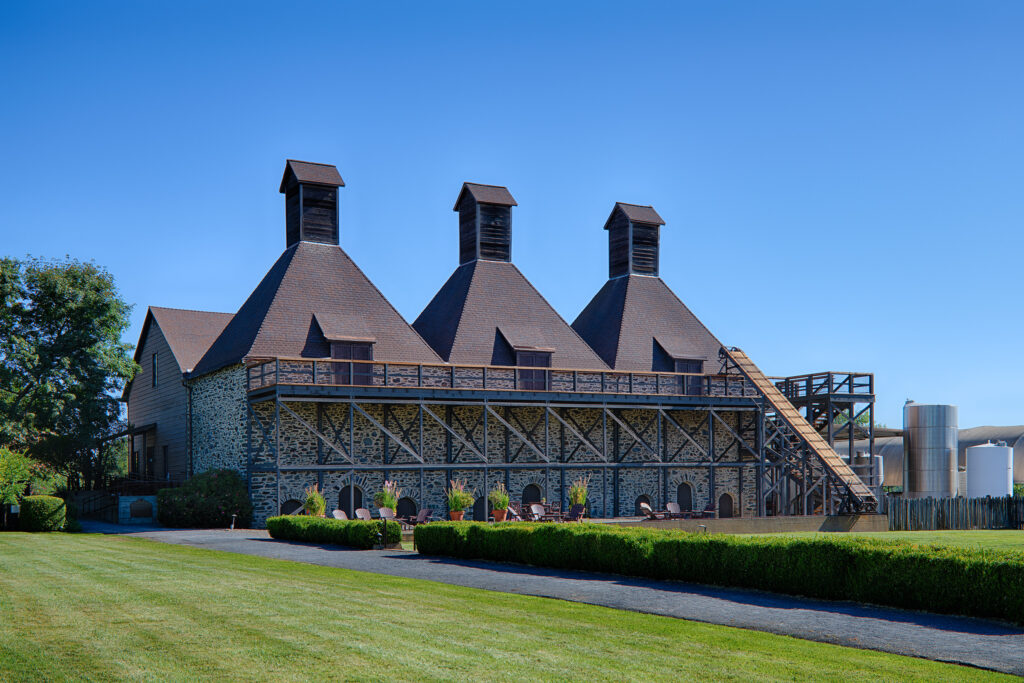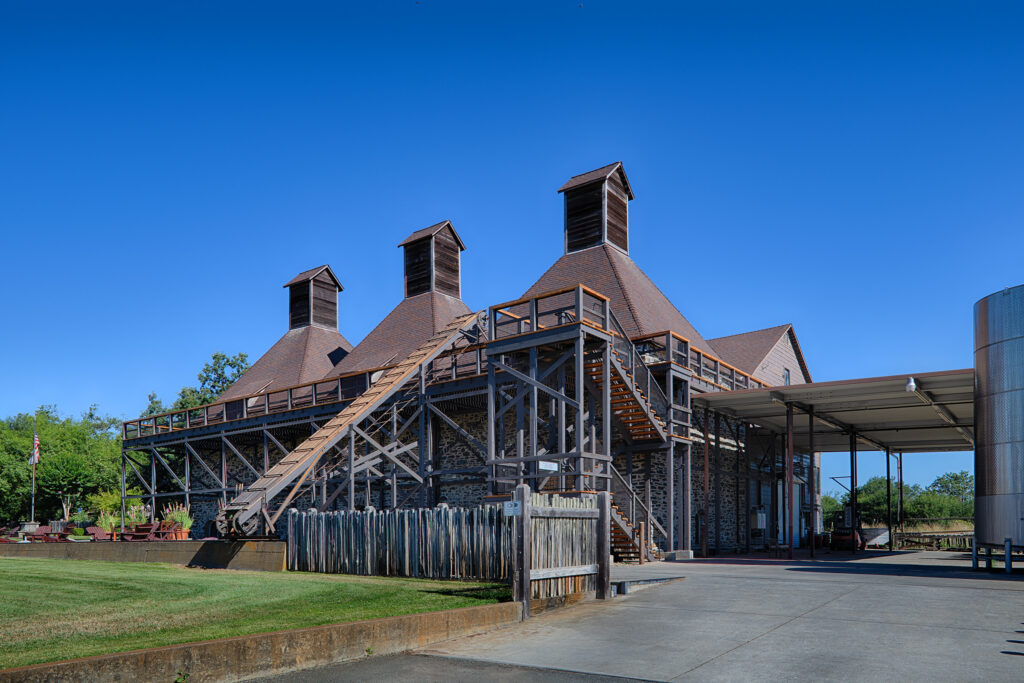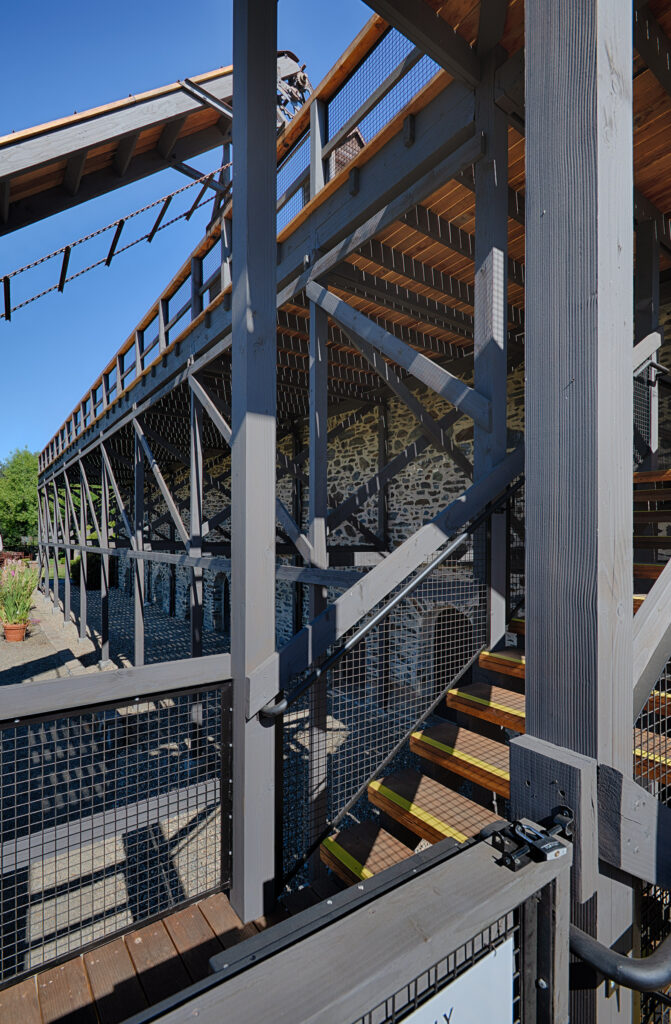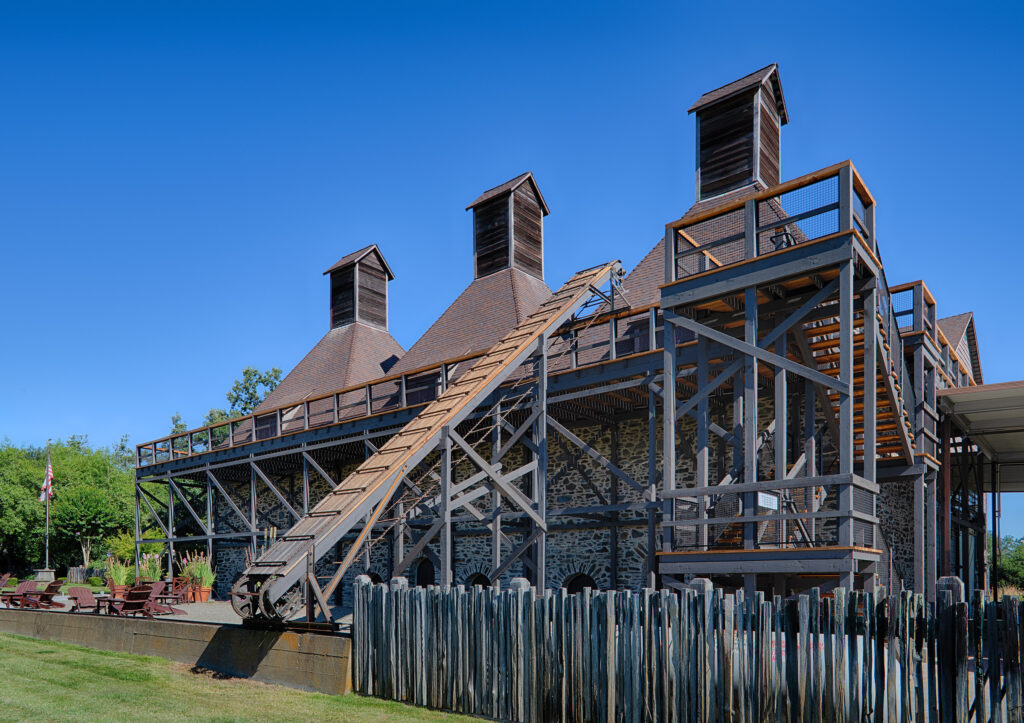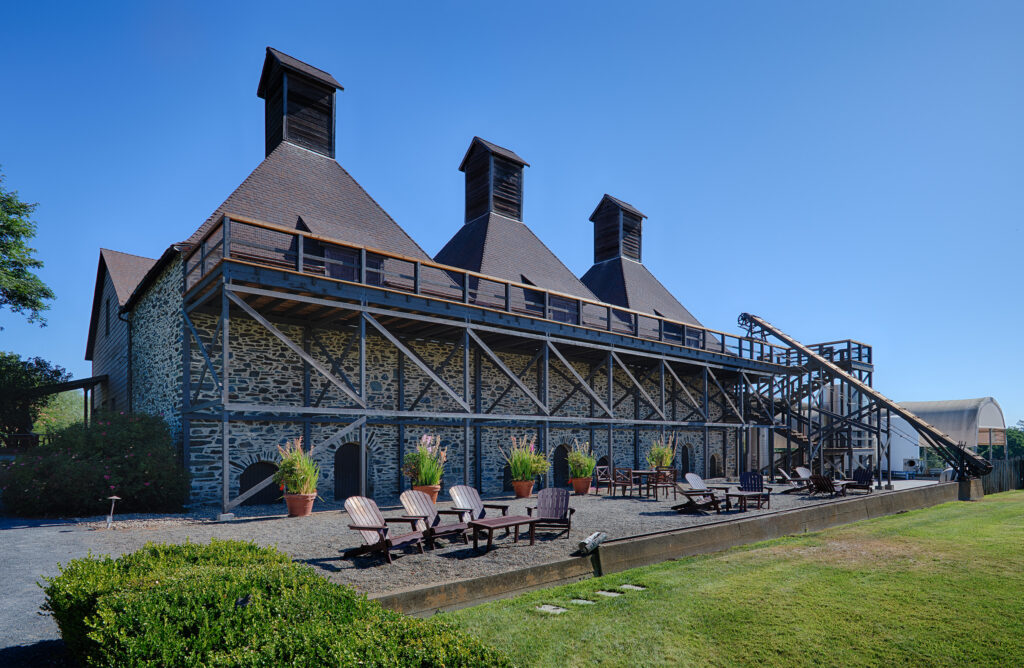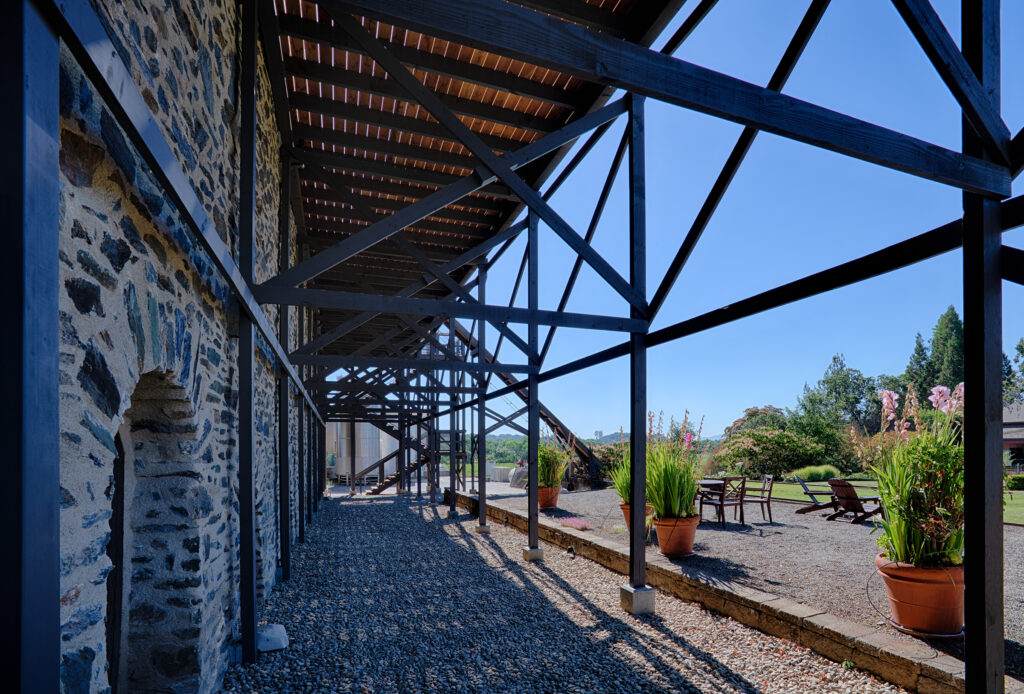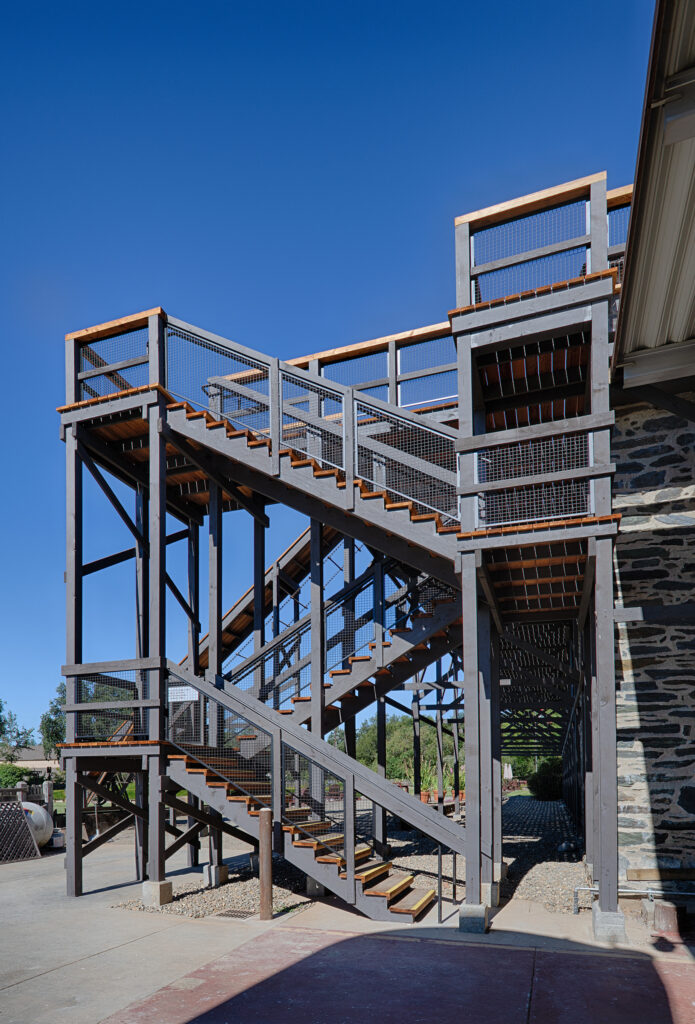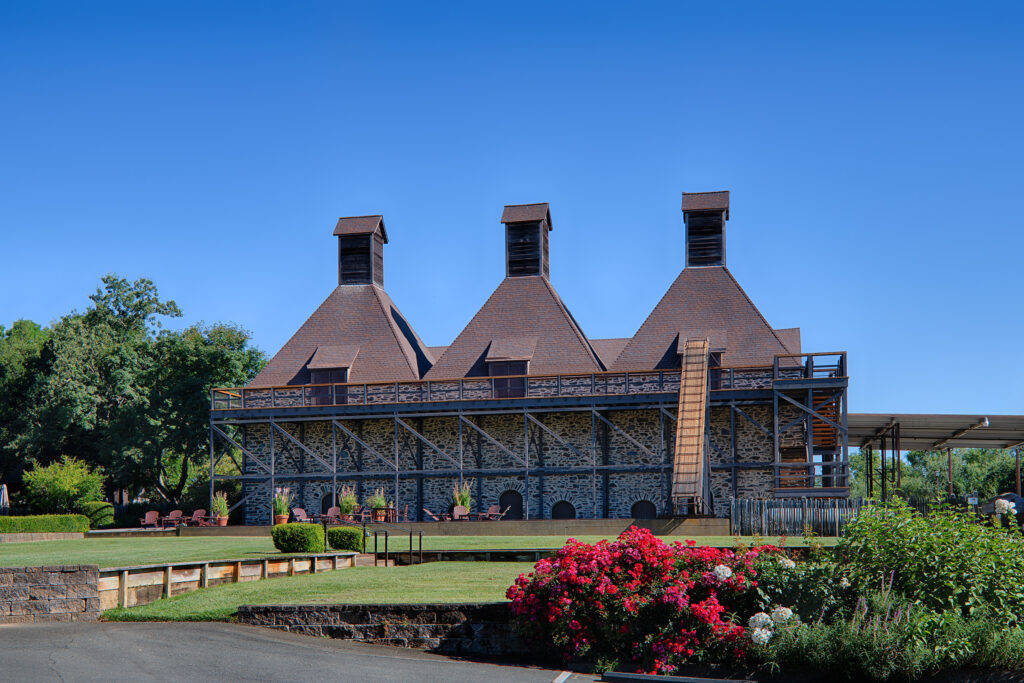Landmark Vineyard’s Hop Kiln Estate Restoration
Since 1974, Landmark Vineyards has been rooted in history and agriculture, influenced by the foundational involvement of Damaris Deere Ford, the great-great-granddaughter of John Deere, inventor of the steel plow and founder of the largest tractor manufacturer in the world. The winery’s long-standing traditions are widely evident through meaningful wine names that honor family heritage, organic farming practices, and classic fermentation techniques.
When Landmark Vineyards purchased the Hop Kiln Estate to serve as a second tasting room, the alignment was undeniable. Not only did the picturesque Russian River Valley acreage speak to a legacy of working rich, abundant soil, the California Historical Landmark shared a comparably deep, complex heritage.
Now owned by holding company Wonderful Co., the current owners of Landmark Vineyards describe themselves as “farmers at heart,” retaining Greg Stach as winemaker for continued consistency of quality and excellence in wine and agriculture. This same commitment to intentionally preserve the past for generations to come was the vision for updating the tasting room building.
Restoring the Hop Kiln Estate was a meticulous endeavor aimed at protecting the historic integrity of the landmark structure while making it safe and accessible for visitors. Winery operations remained open throughout the construction process. The project schedule was carefully tailored to perform heavy equipment use and other potentially disruptive activities outside of business hours to avoid impacting the guest experience.
To ensure this historic gem is accessible to all visitors, improvements were made to the deck, main entrance, bathroom amenities, and navigation across the grounds. The restoration project emphasized the use of historically accurate materials, including refurbishment of the original conveyor belt machinery, though no longer functionally operational. Top quality materials, such as wood beams and finishes reminiscent of the original era were selected for durability, aesthetic appeal, and historic accuracy.
The Hop Kiln Estate stands as a symbol of preservation done right. The careful restoration is a culmination of excellence in craftsmanship, honoring the rich history of the estate, and modern accessibility coming together in perfect harmony.
